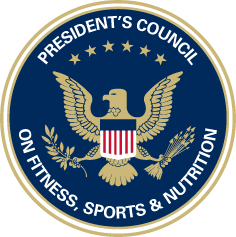Experts Discuss Childhood Obesity
The Daily Reflector
By Michael Abramowitz
Tuesday, November 6, 2012
The growing epidemic of childhood obesity in America also presents challenges to the country’s medical and social leadership. They recognize the toll it takes in lives and resources — and in few places more than in eastern North Carolina.
Experts at East Carolina University and others throughout the South who work on the frontier of obesity research and clinical care presented evidence last Friday that they are facing the challenges head on. They presented some of their findings and talked about programs tailored to confront the epidemic at the eighth annual Pediatric Healthy Weight Summit at the East Carolina Heart Institute at ECU.
Dr. David Collier, director of ECU’s Healthy Weight Research and Treatment Center, presented statistics underscoring the severity of the problem in eastern North Carolina. He said about one in three children in the region are obese, and in some areas the number is more than 40 percent. That compares to 18 percent of adolescents nationwide who are obese.
In eastern North Carolina, children who are obese and between the ages of 10 and 15 stand an 80 percent or greater chance of becoming an obese adult, Collier said. Obese adults, especially blacks, risk cutting from 10-20 years from their lives.
“This is a significant social and ethical challenge to the United States,” Collier said.
Presentations were delivered on research into a variety of topics related to childhood obesity, including theories on self-determined motivation for changing health behavior, by associate professor Jennifer LaGuardia of the University of Rochester; active video games as either a public health boon or bust, by professor Thomas Baranowski of Baylor University; and nutrition for optimizing physical activity in obese children, by assistant professor Abbie Smith of UNC-Chapel Hill.
The keynote address at the summit was delivered by Shellie Pfohl, executive director of The President’s Council on Fitness, Sports and Nutrition.
While the general challenge of poor fitness reaches nationwide and crosses all barriers of race, economic class and geographic location, Pfohl and the council recognize that some segments of the population are more at risk than others.
“Some demographic groups and geographic areas have higher incidence of obesity, such as right here in eastern North Carolina,” Pfohl said. “We are working to identify resources for those areas and enhancing, motivating and bringing people together in those areas.”
Despite the mounting research about the importance of physical activity, Pfohl is concerned that physical education continues to be cut from school districts nationwide as economic challenges force leaders into making difficult spending decisions.
“It’s the wrong direction,” she said.
Pfohl wants to share the achievements of successful communities in the fight against obesity and poor fitness in the hope that leaders in other municipalities will have models to follow that closely match their own challenges and capabilities.
“I want places like Lawton, Oklahoma, to tell about how the people there came together and what they could do when they checked their egos and rolled up their sleeves to overcome barriers without any big grants,” Pfohl said. “They found one thing they could do, a safe routes to school program, that transformed into things like bike lanes throughout the town and then into a whole change to a culture of health.”
Because she understands that treating avoidable health problems like obesity costs billions each year, Pfohl sees the economics of a healthier society differently.
“The economic issues and challenges are certainly complex, and spending money is often hard, but the bottom line here is that we can’t afford not to,” she said.
Contact Michael Abramowitz at mabramowitz@reflector.com or 252- 329-9571.
